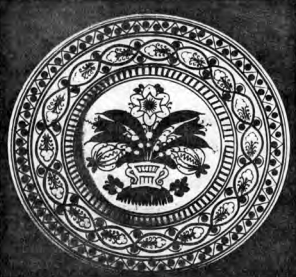Part IV: The Slovak Community of Cleveland
Building a New Life
Slovaks began arriving in Cleveland in the 1870’s, and shortly thereafter started to establish the components of their communities. Settling chiefly near their place of work, they established fraternals reflecting their religious orientation, which in turn, led to the founding of parishes of the same persuasion. Once distinct communities began to appear, they were then bolstered by a vigorous national and local press.
First Jobs
The earliest Slovak immigrants to Cleveland came in the 1870’s, and settled on the banks of the Cuyahoga River. Jan Pankuch, the first historian of this group recorded that Jan Roskos arrived in the city in 1874, followed shortly thereafter by Jan Leheta. In 1880 Jacob Gruss, with his wife, having decided to by-pass the mining regions of Pennsylvania, came to Cleveland on the suggestion of a Bohemian employment agent who advised them to go to the new city of Cleveland, where there was lots of work. They came and were followed by others in search of work. Though many had been farmers, they opted to supply the unskilled labor required for Cleveland’s growing industry, which included machine shops, foundries, steel mills, and manufacturing plants. Some of these plants were: American Steel and Wire Co., the Corrigan-McKinney Co., the Cleveland Hardware Co., the Ferry Cap and Screw Co., the National Carbon Co., the Mechanical Rubber Co., and the Upson Nut Co.
Finding a Home
Finding themselves in a land full of strangers, Cleveland Slovaks, like immigrants before them, banded together in boardinghouses. One of the first arrivals reported that he found lodging in such an establishment run by Poles, and he shared the same bed with four other men. Others found shelter in Czech or German houses, depending upon which language the immigrants could handle. Once an enterprising Slovak acquired an apartment of his own, he would usually keep only the kitchen and one other room for his family and rent out the rest. In this way, his wife would care for five or six boarders and contribute to the family income. Once the family had saved enough money, they might buy the house and continue to rent out rooms. Consequently, Slovaks congregated in certain houses on certain streets and the original community was born.
My String Is Red
Life in a boardinghouse proved to be quite regimented. The men rose at five-thirty in the morning, the housewife cooked them a hearty breakfast that often included steak (beef cost only 5-10¢ a pound in the 1880’s, depending upon the cut) and she also packed them a lunch pail that contained some sort of “goulash” (stew). While the men worked at their 10 or 12-hour shifts in the refineries or mills, the women did their laundry, cleaned the house and prepared supper. For this meal the housewife provided soup, meat, potatoes, vegetables, bread, and dessert with coffee. Sometimes the boarders insisted on buying their own cuts of meat and the housewife marked them with colored thread in order to correctly identify them after cooking. In the evening the boarders might entertain themselves in a nearby saloon, or play cards or attend a lodge meeting.
On Sundays the entire family usually went to church, although some boarders preferred to remain at home and drink kegs of beer bought at specially-reduced rates the night before. The cost of living in such an establishment varied from 50 cents to $2 a week, depending upon the size of the rooms, the number of beds, and the services offered.

